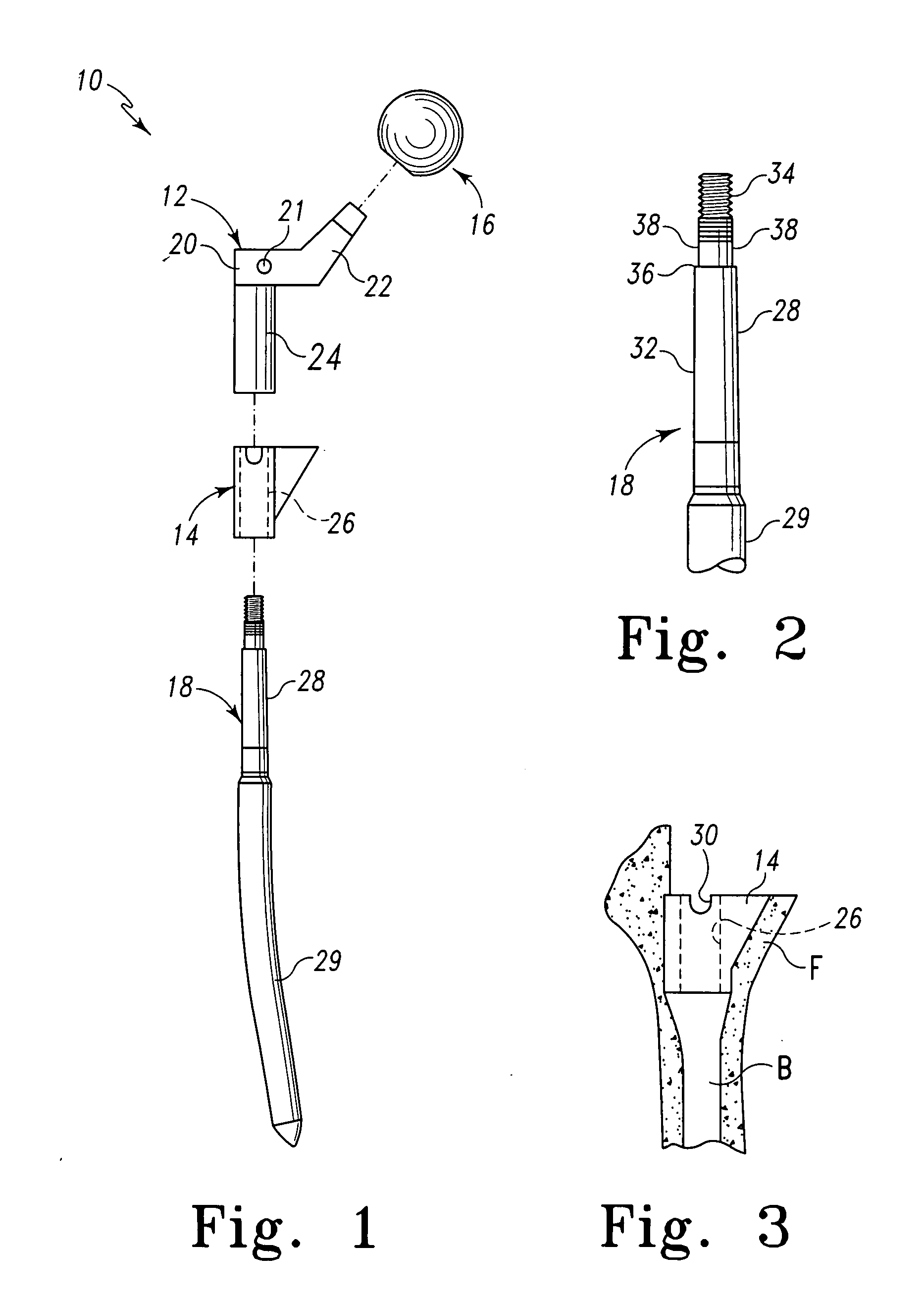Trialing system and method for modular hip joint replacement system
a hip joint replacement and modular technology, applied in the field of system and method for trialing components of modular hip prosthesis, can solve the problems of unfulfilled need, one-piece prosthesis, and difficulty in precise positioning of the upper portion and hence the head of the prosthesis, and achieve the effect of accurate approximation
- Summary
- Abstract
- Description
- Claims
- Application Information
AI Technical Summary
Benefits of technology
Problems solved by technology
Method used
Image
Examples
Embodiment Construction
[0049] While the invention is susceptible to various modifications and alternative forms, a specific embodiment thereof has been shown by way of example in the drawings and will herein be described in detail. It should be understood, however, that there is no intent to limit the invention to the particular form disclosed, but on the contrary, the intention is to cover all modifications, equivalents, and alternatives falling within the spirit and scope of the invention as defined by the appended claims.
[0050] Referring now to FIGS. 1-3, there is shown a modular prosthesis 10 for use during performance of a joint replacement procedure such as a hip replacement procedure. It should be appreciated that although the present invention is herein exemplarily described in regard to performance of a hip replacement procedure, the concepts of the present invention may be utilized in regard to replacement procedures at numerous other joint locations throughout the body. For example, the concep...
PUM
 Login to View More
Login to View More Abstract
Description
Claims
Application Information
 Login to View More
Login to View More - R&D
- Intellectual Property
- Life Sciences
- Materials
- Tech Scout
- Unparalleled Data Quality
- Higher Quality Content
- 60% Fewer Hallucinations
Browse by: Latest US Patents, China's latest patents, Technical Efficacy Thesaurus, Application Domain, Technology Topic, Popular Technical Reports.
© 2025 PatSnap. All rights reserved.Legal|Privacy policy|Modern Slavery Act Transparency Statement|Sitemap|About US| Contact US: help@patsnap.com



